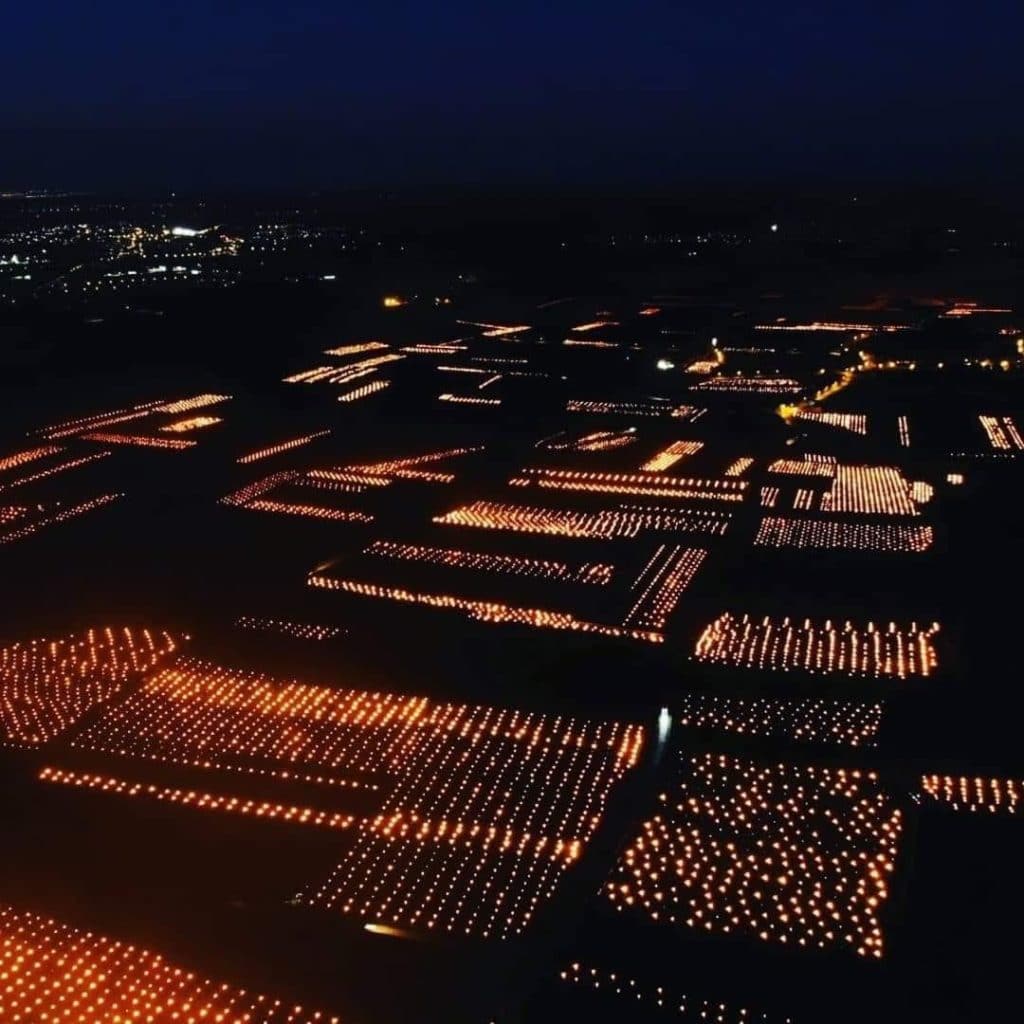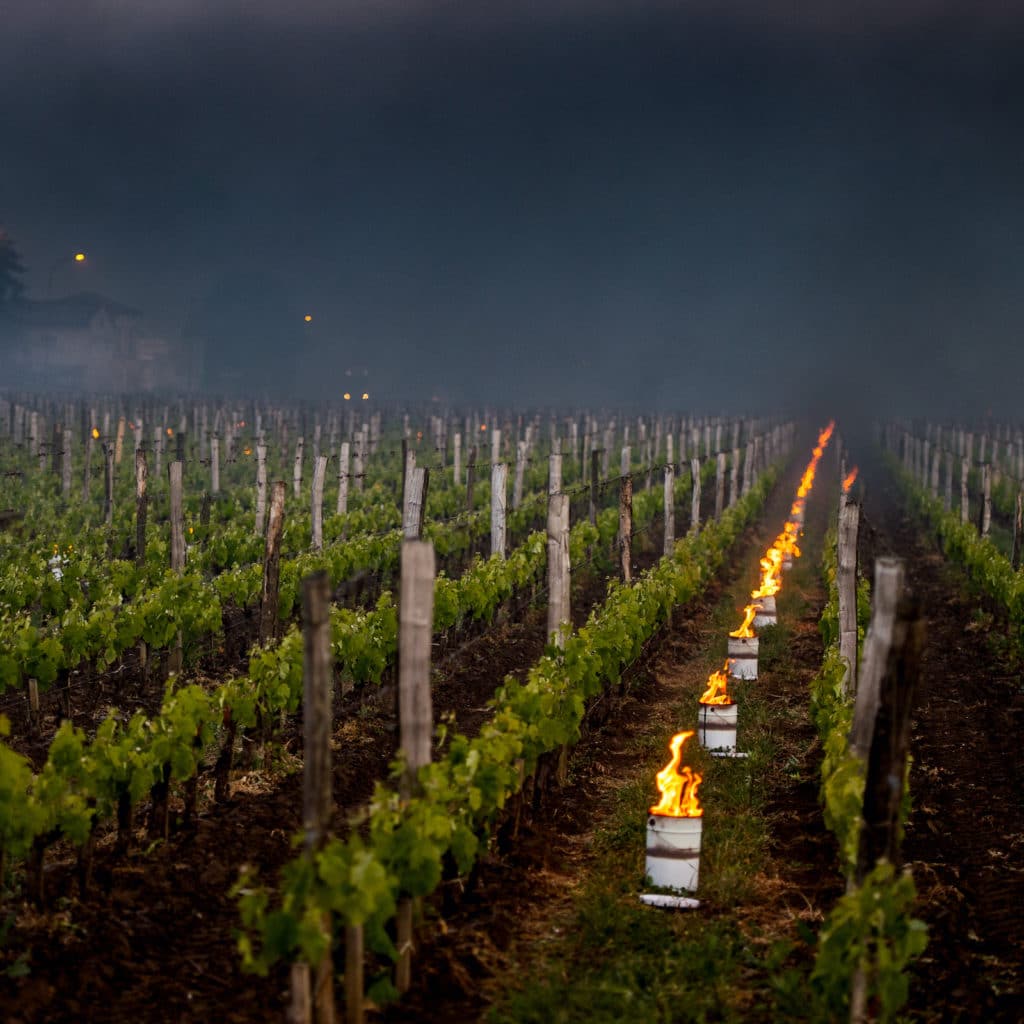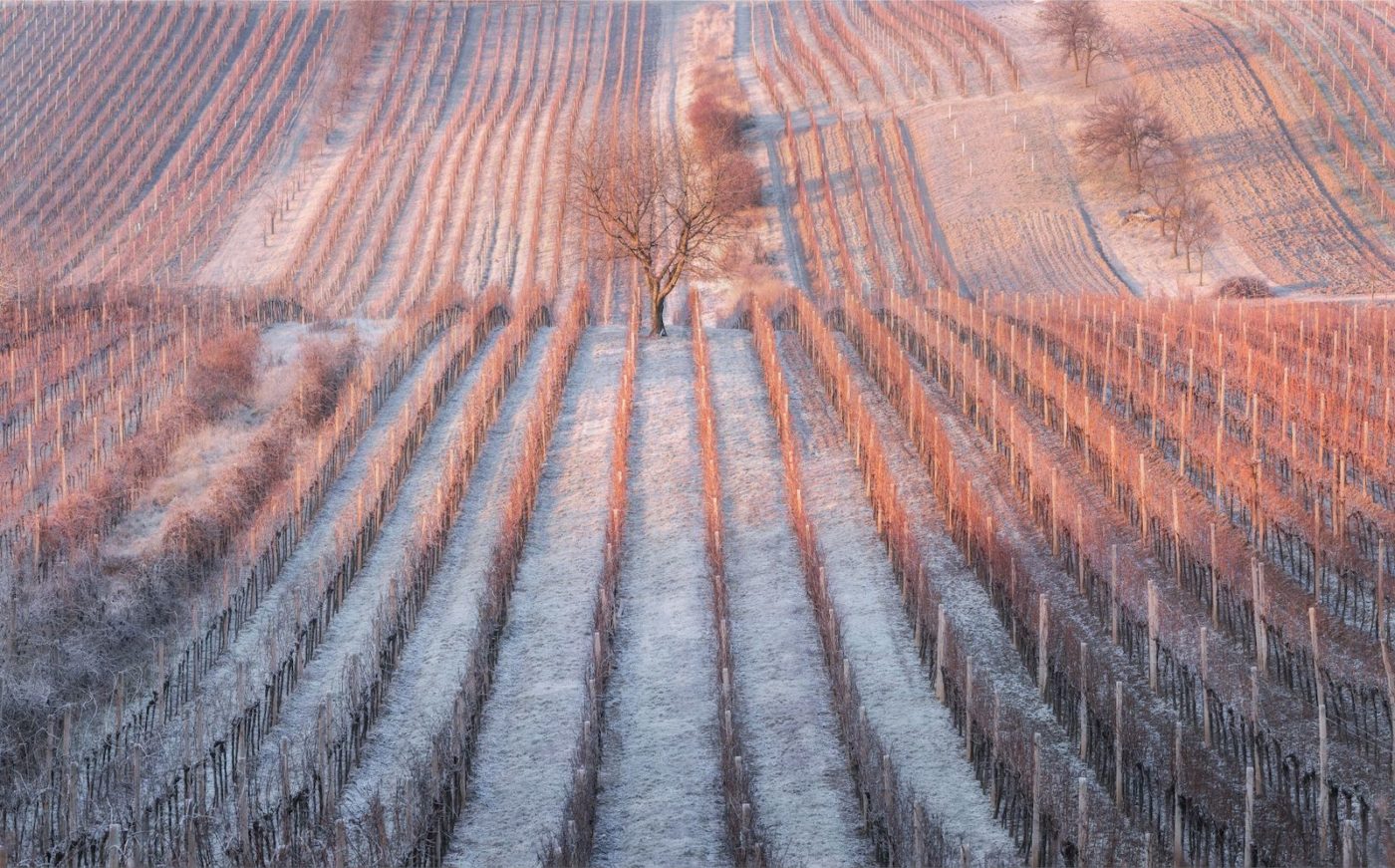Is frost bad for vineyards. The short answer is – it depends on the time of year.
Vineyard frost during the winter up to about March 15th at the latest is no problem. In fact, if there are a couple or three weeks of really heavy frosts in December, January or February, the vignerons of Bordeaux are very happy (see picture above). The frost tends to significantly lower the population of ticks as well as other unwanted bugs and fungi.
The real problem for Bordeaux vineyards comes when there is frost in April or late March if there has been a warm patch during early March. It is not always possible for a Bordeaux vineyard owner to prepare everything for the possibility of a frost, especially if their vineyard is large (over 40 hectares). Nevertheless, there are several actions that Bordeaux vignerons can take to minimize their risk of frost damage.
But before we look at these actions, it is important to understand that the frost that we are talking about in the vineyards of Bordeaux is not icicles hanging from vines. The frosts that can cause damage are spring frosts in late March or April. So these frosts are not heavy, far from it, the spring frosts of Bordeaux are very light and typically arrive early morning at the coldest point of the night and only when there is sufficient moisture to freeze. For example, the temperatures can drop below zero and not lead to frost when the air humidity is low. Equally you can awake to a light spring frost with temperatures barely touching zero but moisture levels being high.

In a perfect world what would be some of the tactics to prevent or reduce frost risks.
- Try to avoid purchasing vineyards or planting in protected valleys prone to moisture. Over the years Bordeaux farmers have learnt what works and what does not; so you will often see tree plantations or cattle pastures in these locations. However, when it comes to marginal spring frosts you want every advantage. The ideal then will be higher elevation, southerly exposed slopes.
- Don’t mow the grass less than three days before a forecasted cold patch that could bring frost. Mowing generates a lot of moisture around the base of the vine plant and during a risky period of days when colder temperatures have been forecast, it would be important to keep moisture levels to an absolute minimum and therefore mow as early as possible.
- Remove all grass at the base of the vine. Grasses and other vegetal matter including vine shoots at the base of the plant, can trap moisture and therefore attract frost. You will hear vigneron refer to this vegetation as an “echelle” or ladder since it provides access to the plant for various unwanted creatures, maladies or frost. Some farmers will mechanically cut away all of the grass while others will use herbicides to kill off all grasses. The net effect is that the ground at the base of the vine is naked soils thereby removing the risk of moisture build up.
- Timing of pruning. It is not always possible to leave pruning to the last minute. This is because it is very time-consuming manual work and can take weeks if a vineyard is large. Ideally however, if you can prune mid-February to mid-March you will delay the plant’s natural growth cycle which, even if it buys you a few days can be crucial.
- Leave buds on the vine during pruning. The main pruning event of the year will happen in the winter months, typically between December and mid-March. There will be other less extensive pruning that will happen as the vine explodes into full growth however, the winter pruning leaves the vigneron with an important choice regarding the buds. If she leaves the buds on, she will need to prune again a few weeks later, but the advantage of leaving them is that nature has designed the bud with a “counter-bud” located immediately next to the bud. In the event that frost damages the bud, the counter bud kicks in and will launch a few days behind the main bud. In Bordeaux two weeks ago, there were some light spring frosts that caused some press in mid-March but these did not cause any damage, they will at worst have triggered the counter-bud into action. What becomes really dangerous is when there is another frost around this time in April once the vine has started its growth cycle.
- Install your own weather station. Never has this relatively inexpensive bit of equipment been more valuable than now. With most commercial flights being grounded due to the Covid-19 pandemic there is an unexpected consequence: the lower reliability of weather forecasts. Since the 1970s, a global network of interoperable weather stations has provided most of the measurements required to establish forecasting models. Without this network weather forecasting accuracy drops significantly and while vignerons will no doubt draw from as many sources as possible – having their own weather data may be invaluable.
- Preparing for frost with counter measures. The famous vineyards of the most prestigious appellations have been known to use helicopters and wind fans to keep air moving at particularly risky moments of the year. More commonly owners will invest in steel drums that they fill with flammable material that is lit a couple of hours before dawn to raise the temperature across the vineyard. Insert steel drums image Less commonly some vignerons that have a natural source of water nearby will install pumps and spray water over their vineyards at the most vulnerable moments of the early morning.

The relationship between the weather and farmers is almost as old as our species. As it sends challenges, so humans adapt but from time to time such as the big freeze of the 1956 and then the frosts of 2017 it will devastate agriculture. All businesses come with their risks and thankfully this risk is not too frequent in Bordeaux, but wise strategies are nonetheless worth employing to minimize the risk of damage or loss.
Written by Michael Baynes
